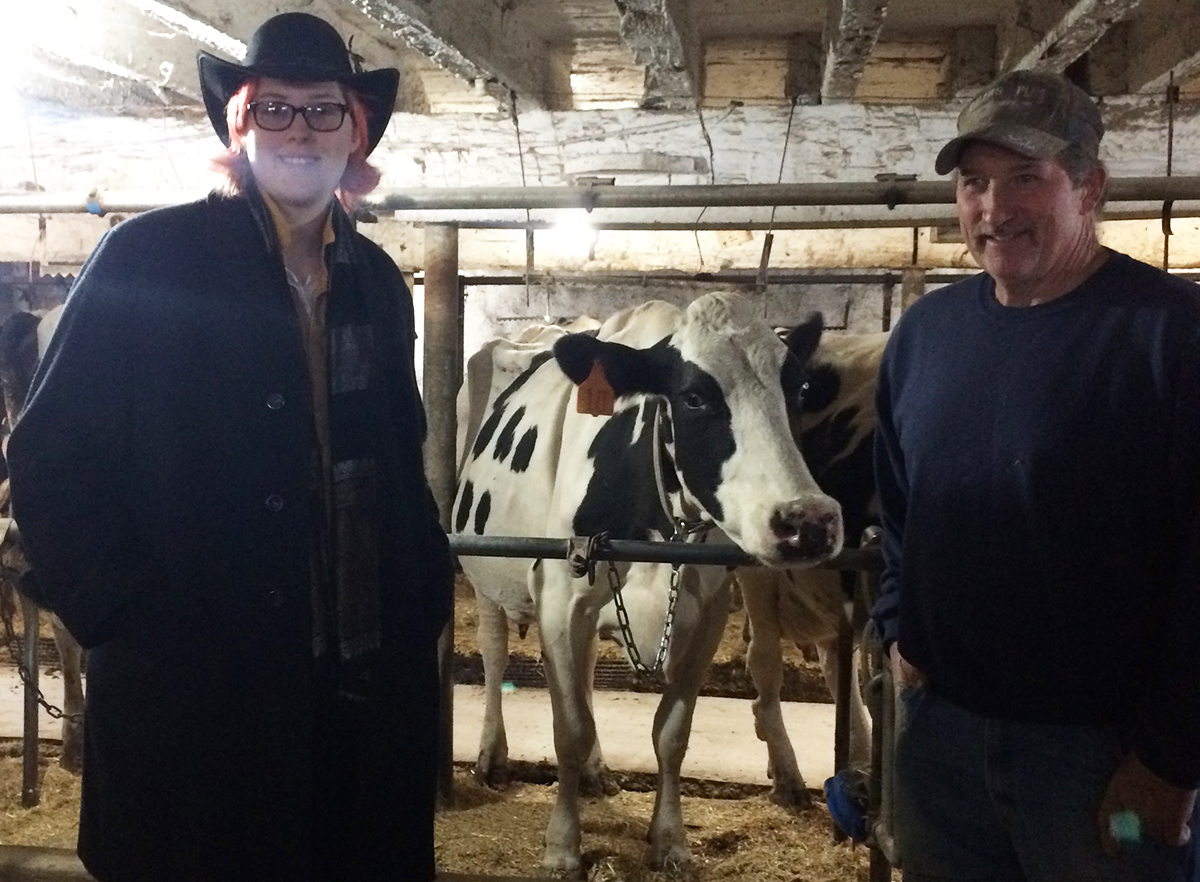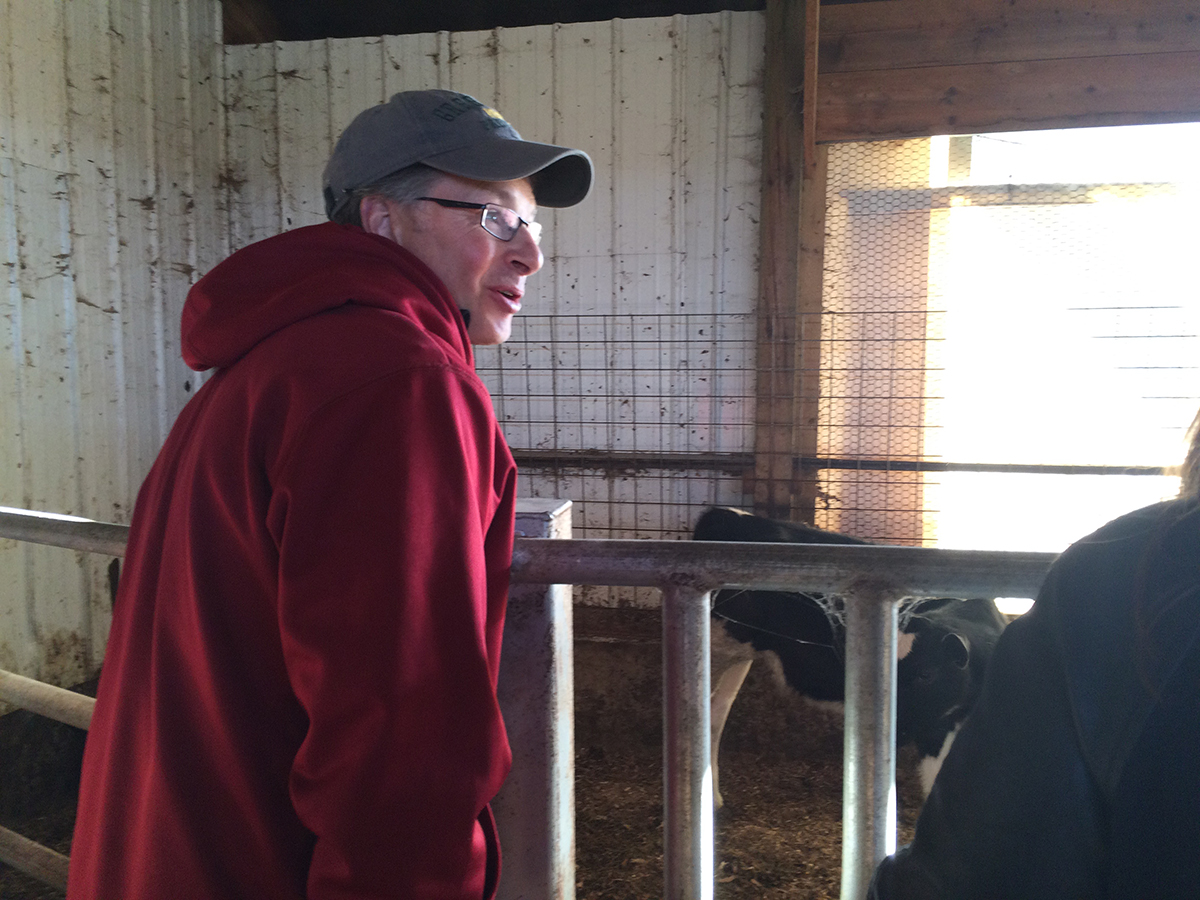Barn Free: A Visit to Red Barn Family Farms Inspires Hope
As a kid, I loved spending time in the barn. Always an introvert, I loved to listen to the horses exhaling warm air into cold, the soft padding of barn cats’ paws on the wooden steps, falling snow, the drip of a leak in the ceiling. The raucous moments with my cousins and friends are just as sharply marked in my memory. Despite my allergies to cats, I always found myself trying to make the barn kittens part of the family at home in the winter —though I never felt much like staying indoors myself. Everything seemed somehow profound in feet of lake-effect snow. Wonder consistently overcame the cold, sight and sound amplified by the chill and lack of winter foliage.

Lawrence student Lisa Kent with Red Barn farmer Don Zuleger
I shared a few snippets of this wonder with a group of mostly first-year students from Lawrence University on a 40-plus degree day outside Appleton, WI. We were visiting two of the six members of Red Barn Family Farms, the Zuleger and Marcks family farms. Stepping into the Zulegers’ barn, I felt immediately at home, recalling the nuances of farm life that drove me to get involved in the good food movement. The earthy, musky smell of the cows, the kittens huddled in the hay, and the looks on the students’ faces all reinforced my purpose. One student commented that she had no idea cows could be so friendly or curious.
Red Barn Family Farms was started by our tour guide Terry Homan and his wife, Paula, with the idea of supporting families who farm as a way of life, families just like my own. Terry is a veterinarian, and once he graduated from vet school, he realized that he wanted to do more to support small farmers and healthy animals. The Homans wanted to offer consumers the freshest, cleanest, and best-tasting milk possible. Let me tell you, it was just that!
True to the Red Barn mission, the cows at each farm were healthy, beautiful animals.
The Red Barn Rules — the standards that Terry has created to ensure that Red Barn supports small family farms — limit each farm to 70 or fewer cows. There were about 30 cows at both of the farms that we toured. Despite their tiny size, Red Barn supplies milk and cheese not just to Lawrence University but also Beloit College, and some of their milk goes to Sugar River Dairy, a Beloit College vendor. (I toured their tiny facility while visiting Beloit, getting to see that relationship full circle.)
Red Barn never uses rBGH to promote milk production, and Terry compared its effects to drinking a Monster Energy drink: you might get a little more work done, but it’s not a sustainable choice over the long term! This philosophy aligns with Bon Appétit’s — the company switched to rBGH-free milk in 2002—as well as my own.

Farmer Terry Homan explaining the “Red Barn Rules” for raising healthy, happy cows
True to the Red Barn mission, the cows at each farm were healthy, beautiful animals. The families who cared for them clearly cared about them. At the Marcks family’s farm, we met a cow named Passion, who was lively and gregarious, enthusiastically greeting each student. A while back, she contracted hardware disease. This painful ailment can be hard to diagnose because it is caused by a piece of hardware like a screw getting into a cow’s rumen and then reticulum and possibly elsewhere. But the Marcks family didn’t stop treating Passion until they figured out what was wrong and she healed. That’s caring for an animal.
Terry told our group that Lawrence was one of the first places to buy Red Barn’s milk and that their success was not in small part due to Bon Appétit’s support. Hearing stories like this one and others through my travels as a Bon Appétit Fellow gives me hope that small farms can make a comeback in America. It’s going to take a lot of work to decentralize power in the food system, but this farm kid still has hope.